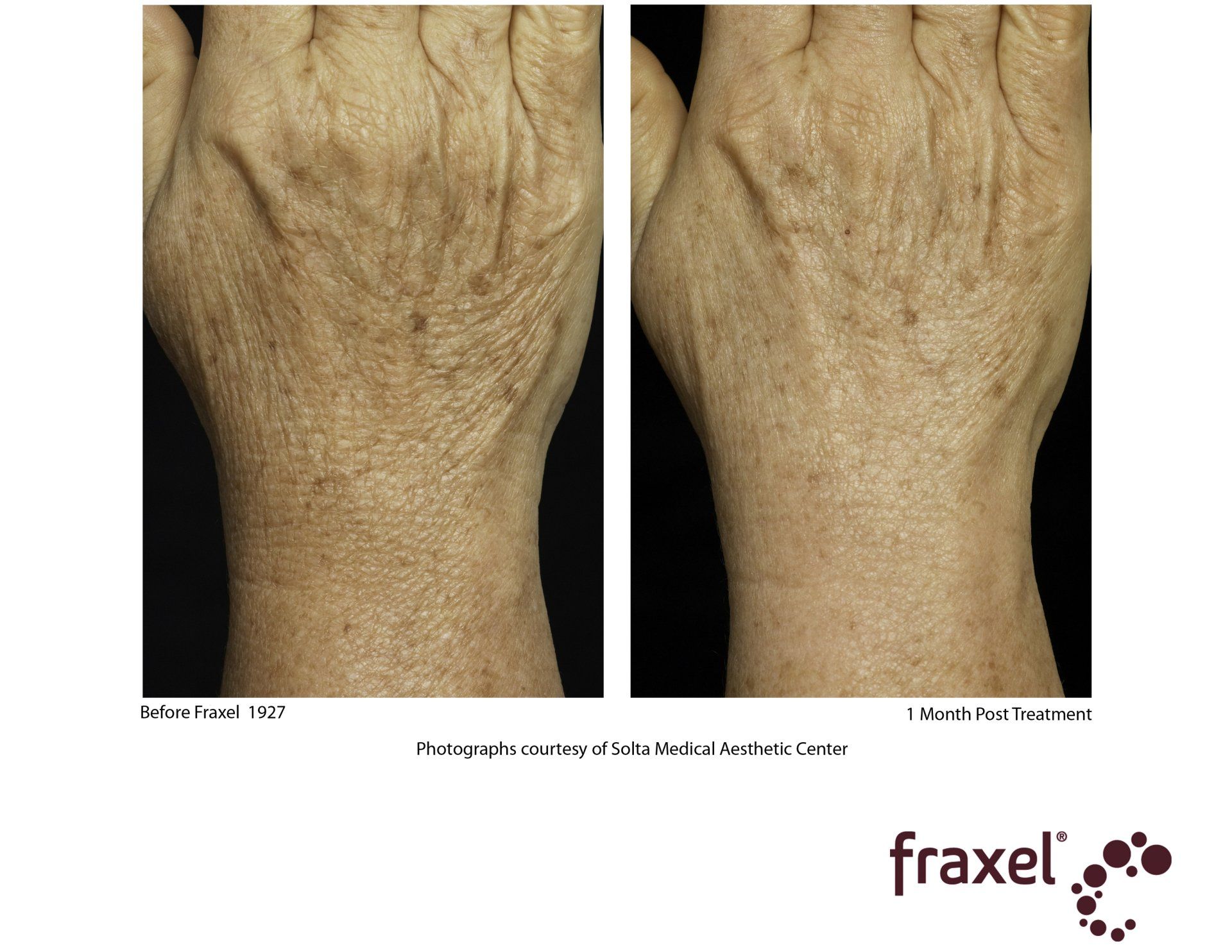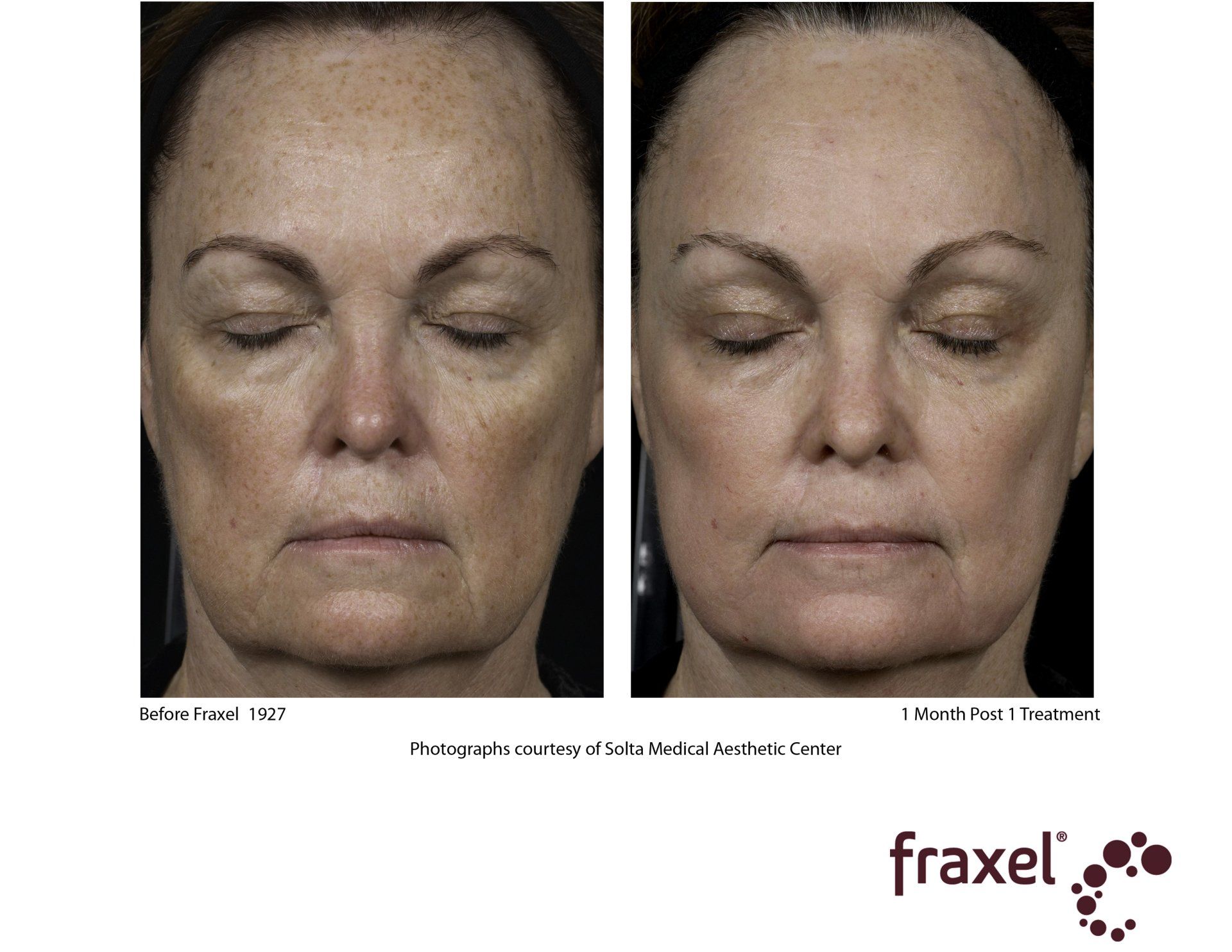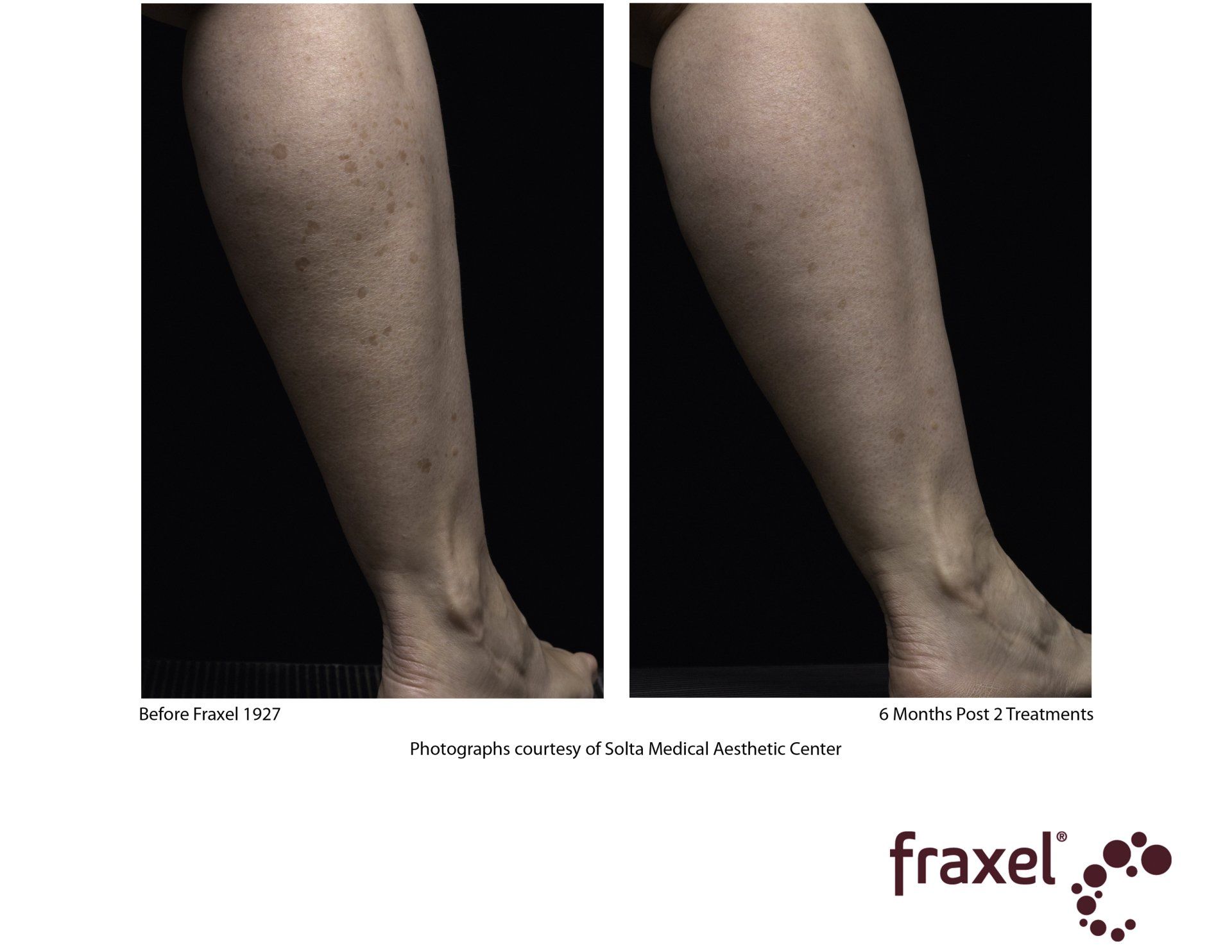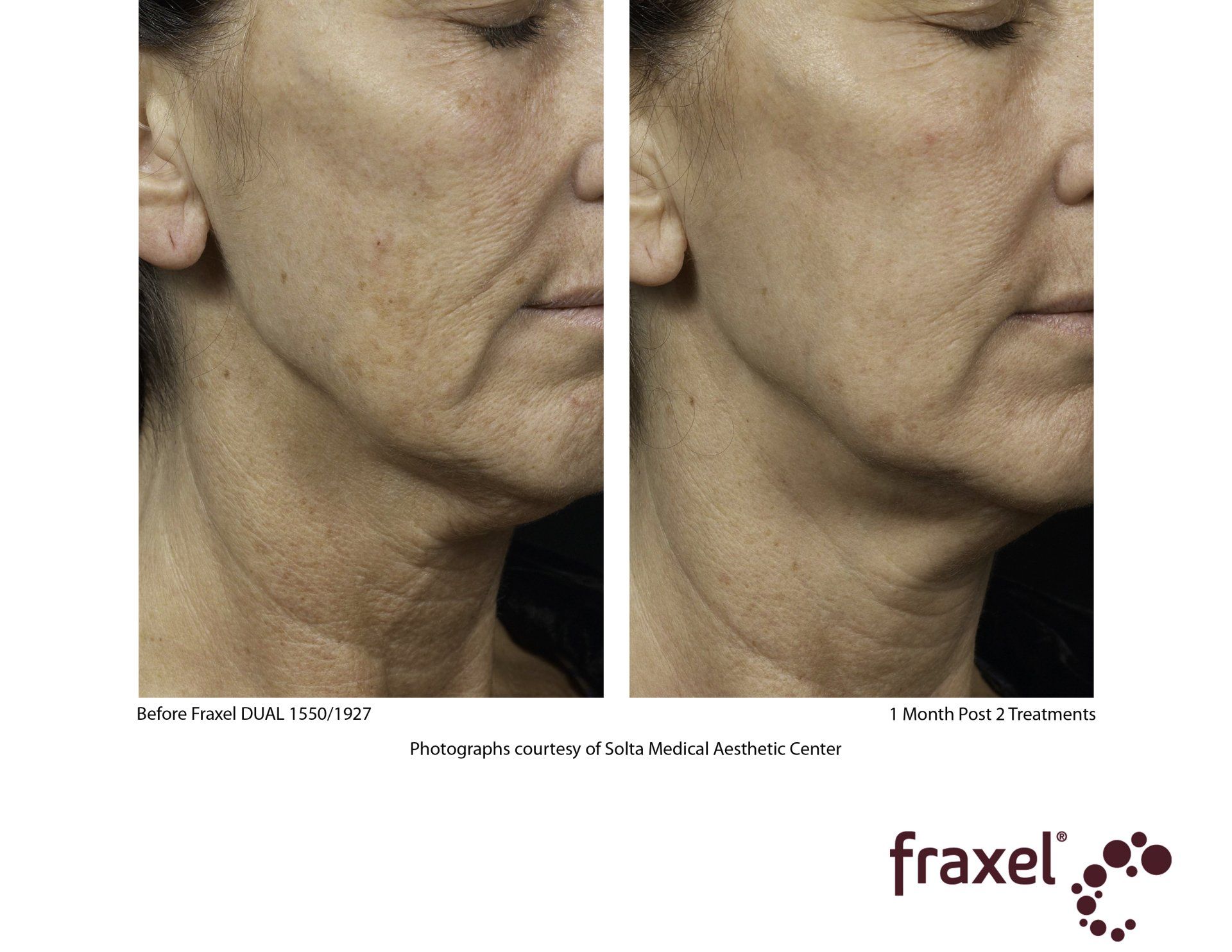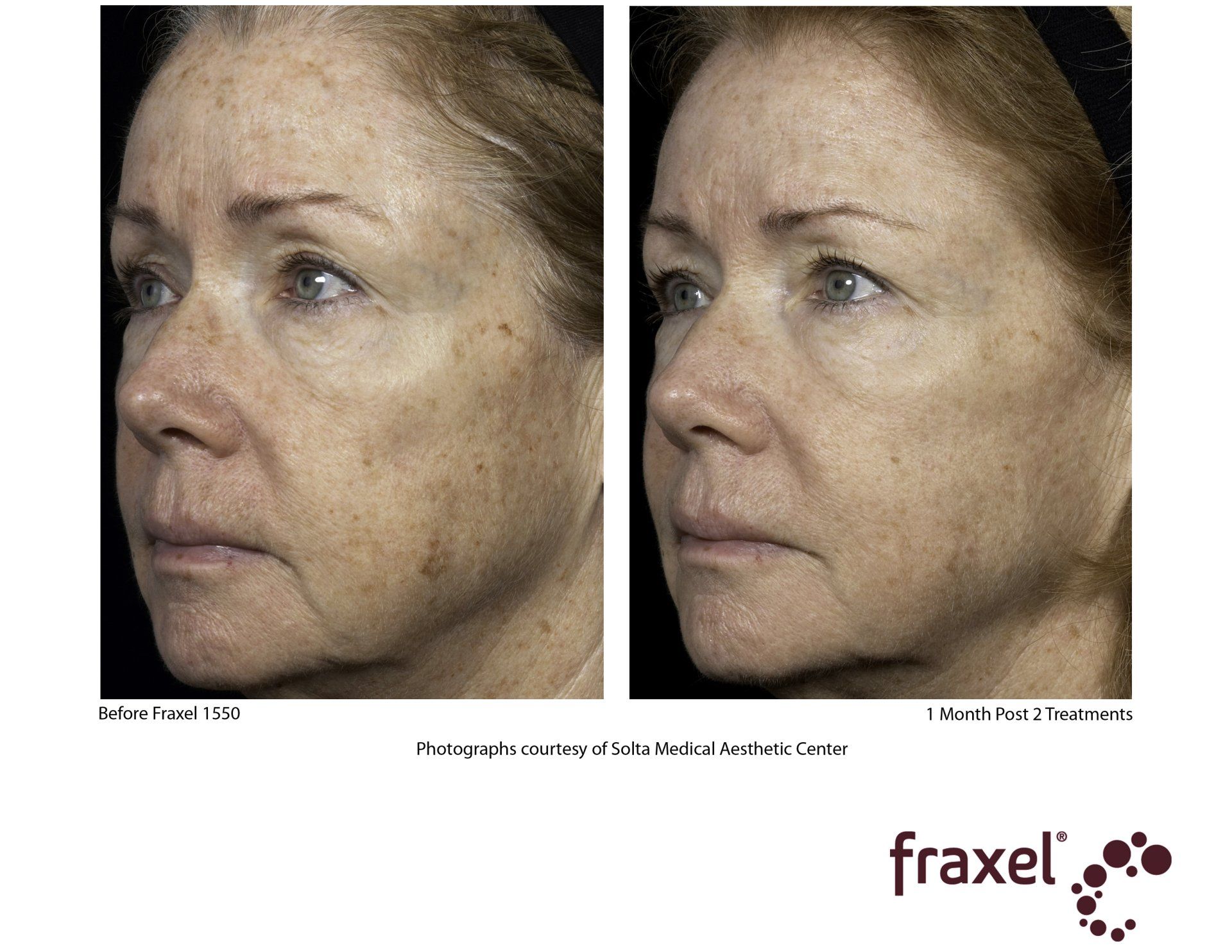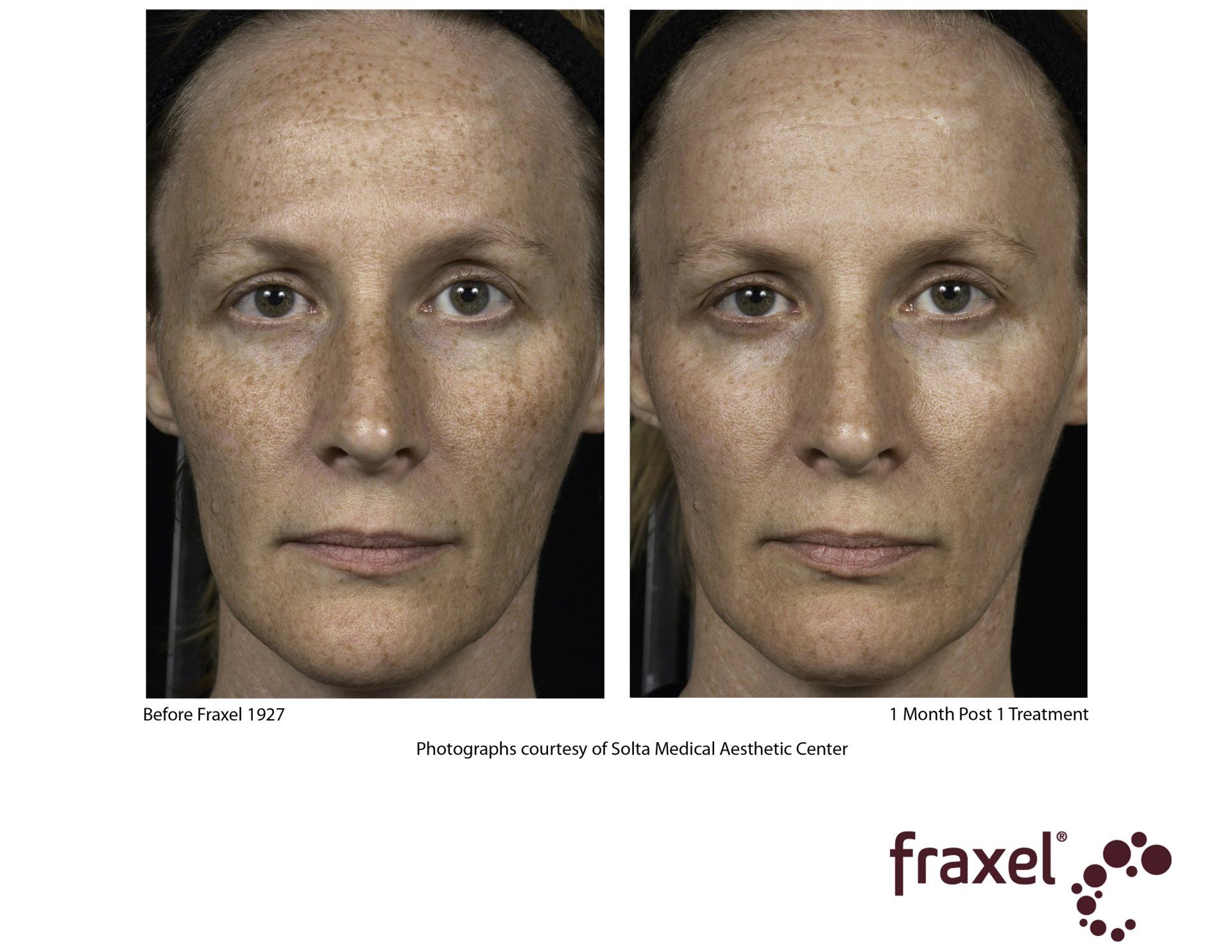INDICATION
The Fraxel 1550, Fraxel 1927, and Fraxel DUAL 1550/1927 Laser Systems are cleared for the following indications for use: o Fraxel 1550nm wavelength is indicated for dermatological procedures requiring the coagulation of soft tissue; skin resurfacing procedures; treatment of dyschromia and cutaneous lesions, such as, but not limited to lentigos, solar lentigos, actinic keratosis, and melasma; and treatment of periorbital wrinkles, acne scars, and surgical scars.
o Fraxel 1927nm wavelength is indicated for dermatological procedures requiring the coagulation of soft tissue; treatment of actinic keratosis; treatment of pigmented lesions, specifically age spots, sun spots, and ephiledes.
IMPORTANT SAFETY INFORMATION
The following contraindications are routine for many laser treatments and may also be associated with non-ablative Fraxel Laser Systems treatments. You may not be an appropriate candidate for a Fraxel treatment if you:
- Are predisposed to keloid formation or excessive scarring;
- Have experienced pigmentation changes following surgery;
- Have had skin indentations and textural changes following surgery;
- Are on systemic steroids (e.g. prednisone, dexamethasone), which should be rigorously avoided prior to and throughout the course of treatment; and
- Are undergoing isotretinoin acne treatment or are taking drugs in a similar class.
Possible Complications from of Fraxel treatment include:
- Blistering and Burns: May develop over the treated areas.
- Discoloration: The possibility of temporary and permanent skin color change is known to exist with any laser treatment and may occur.
- Eye Injury: The Fraxel DUAL generates an intense beam of laser radiation which may cause injury if not used properly. Protective eyewear or goggles should be worn. It is important to keep the eye protection on at all times during treatment in order to protect your eyes from accidental laser exposure and serious injury.
- Infection: A risk of infection exists whenever the skin is wounded. The possibility for infection exists even with non-ablative fractional laser devices such the Fraxel.
- Keloid Formation: A thickened scar can result from excessive growth of fibrous tissue.
- Prolonged Redness: Mild to moderate transient redness is an expected response. However, if it is severe or persists significantly longer than expected, you should not have another treatment until it goes away.
- Scarring: The possibility for scarring exists. Local scarring may occur directly from laser exposure if treatment procedures are not followed properly, or from infection or physical irritation such as picking and rubbing.
- Delayed Wound Healing / Skin Textural Changes: Following laser treatment, restoration of the skin may not occur as expected due to your physiology, such as poor wound healing ability or post-treatment care. This may result in undesirable textural changes to the skin.
- Temporary Bruising: May develop over the treated areas.


